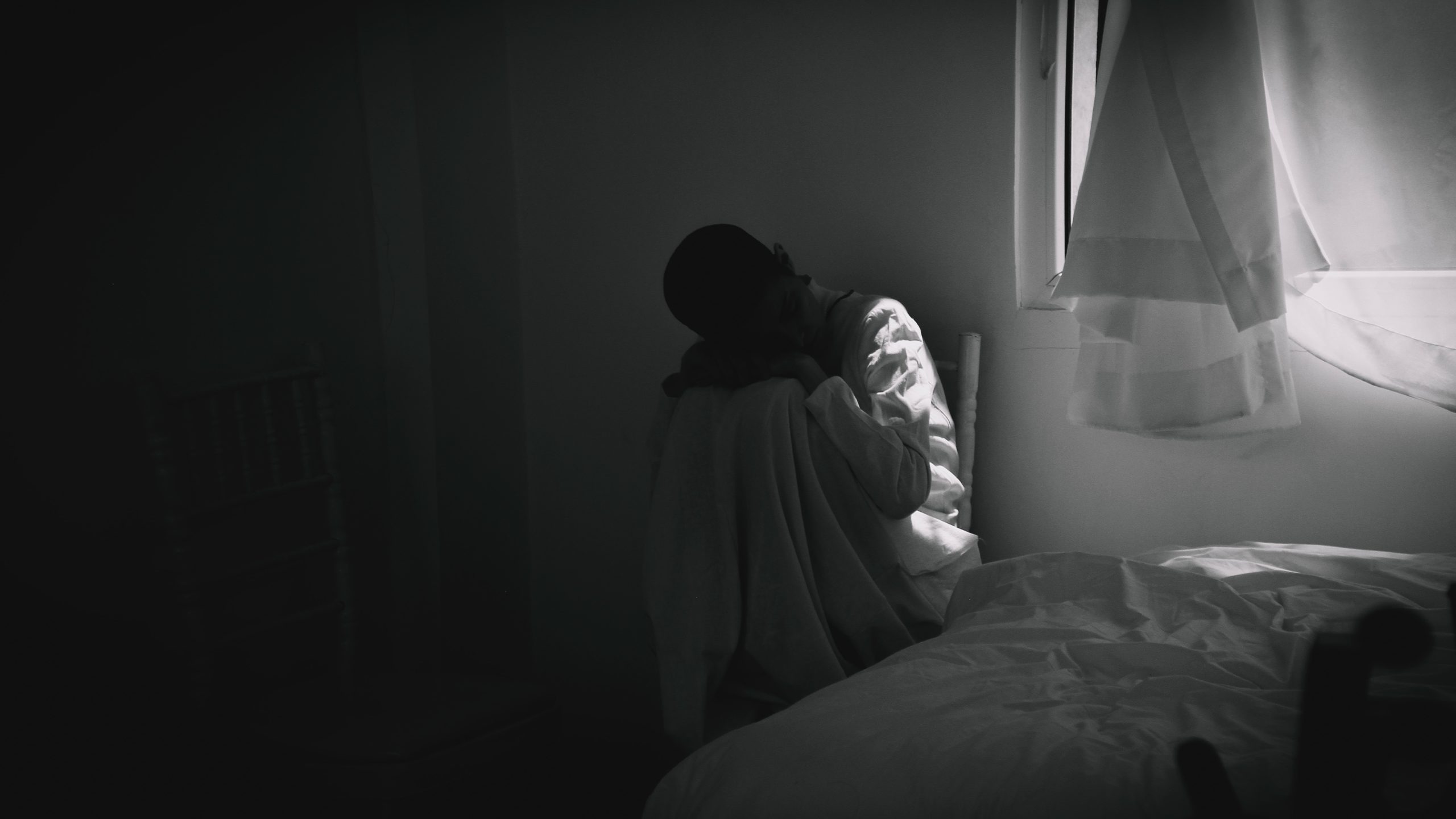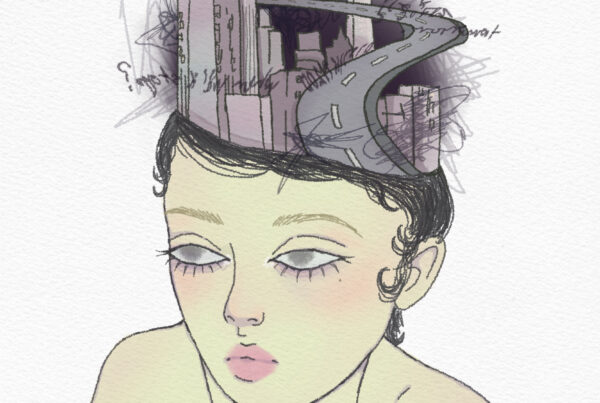
Humans have built a world that thrives on connection. Isolation stands as a potent aberration, casting its shadow upon our thoroughly social existence. It is a force that severs the very threads that weave our species together. Isolation can produce behavior so anomalous, that it led influential natural historian Carolus Linnaeus to cast its victims as a distinct species: homo ferens. Feral man.
Humans have built a world that thrives on connection. Isolation stands as a potent aberration, casting its shadow upon our thoroughly social existence. It is a force that severs the very threads that weave our species together. Isolation can produce behavior so anomalous, that it led influential natural historian Carolus Linnaeus to cast its victims as a distinct species: homo ferens. Feral man.

Photo by Sam Moghadam Khamseh on Unsplash

Photo by Sam Moghadam Khamseh on Unsplash
“Father hit arm. Big wood. Genie cry… Not spit. Father. Hit face — spit. Father hit big stick. Father is angry. Father hit Genie big stick. Father take piece wood hit. Cry. Father make me cry.”
These unsettling words come from perhaps the most well-known ‘feral child’ of modern times, Genie, who spent her first thirteen years confined in extreme isolation, neglected and abused by her father (Newton, 2010). When she was discovered, the effects of neglect and isolation were stark. She ‘bunny walked’ and spat. She couldn’t walk straight, chew, or speak. She was scared of clawed animals because her father used to growl like a mad dog outside her door. She struggled to focus her vision on things beyond 10 feet because she’d never left her 10-feet room. UCLA psychologist James Kent described her as “the most profoundly damaged child I’ve ever seen.”
Another UCLA scientist Susan Curtiss worked with the ‘Genie team’ of researchers, who were interested in studying isolation. Genie spent a significant amount of time with Curtiss and her cognitive puzzles. Curtiss remarked that Genie had signs of intelligence, from stringing stories to building structures with sticks – “the lights were on” (Rymer, 1994). But Genie’s language remained problematic – she could not grasp grammar. Strangely, however, her ability to communicate non-verbally was fascinating. She expressed her thoughts without saying a word. In her book on Genie, Curtis tells the tale of Genie and a butcher who “just connected and communicated somehow.” He would bring her bone, meat or fish and Genie would “do her thing with it” – explore it tactilely and orally, “as if she were blind” (Curtiss, 1978). Her mannerisms were both fascinating and heartbreaking.
Though she captivated researchers and strangers alike through her dazzling intensity and keen exploration of the still-new world, Genie’s story wouldn’t end well. She shifted homes quite frequently, often living with and befriending her researchers. Ultimately when the research project ended, she would recluse back to care homes where she could not fit in. What little progress she may have made would slip backwards. According to psychiatrist Jay Shurley, a specialist in extreme social isolation, “Socially isolated children have parents who treat them as animals. There is no encouragement of any human closeness. She was this isolated person, incarcerated for all those years, and then she emerged and lived in a more reasonable world for a while, and responded to this world, and then the door was shut and she withdrew again and her soul was sick.”
If currently alive, Genie is probably in an assisted home. Curtiss, whose last contact with her was over four decades ago, captures both the curiosity and tragedy of Genie’s story perfectly: “Genie is the most powerful, most inspiring person I’ve ever met. I’d give up my job to see her again. I worked with her, and I knew her as a friend. And, of the two, the important thing was getting to know her. I would give up the rest to know her again.” (Rymers, 1994).
“Another case, all too similar to Genie, was uncovered in 2005. Daniella Crockette was found in a small dark room, lying on a filthy and reeking threadbare mattress.”
Another case, all too similar to Genie, was uncovered in 2005. Daniella Crockette was found in a small dark room, lying on a filthy and reeking threadbare mattress. Her body was covered in insect bites, rashes and sores. The investigator who found her, from the Florida Department of Children and Families, described in tears that it was “unbelievable, the worst I’ve ever seen.” The neighbors had not even known that Dani existed. She was seven years old. She had never stepped outside.
Dani’s story, though, offers more optimism hereon than Genie’s. Dani was immediately treated, medically and psychologically. She entered a foster home, where she received constant care. She was adopted soon after, and continued to work with therapists and speech specialists, as well as partaking in horseback riding and swimming. Dani went to public school and enrolled in special education classes. She could not talk, but she listened and responded (Davis, 1940). She learned to chew, to make eye contact, and even to hold hands and hug. Most surprisingly, she learned to express emotion – which has historically been a challenge for children whose development is so grossly held back (Davis, 1947). Last reported in 2017, Danielle was living in a group home. Despite facing challenges with her speech, she has been making unexpected progress. Additionally, it’s touching that her adoptive father makes regular visits.
“In the first four months of her life, Anna had shuffled among six homes, followed by an attic, and then a storage room.”
In the first four months of her life, Anna had shuffled among six homes, followed by an attic, and then a storage room. E. M. Smith from the Western Pennsylvania Humane Society found her on a small chair with her arms tied above her head, rendering her unable to move or speak. Once again, an all too familiar sentiment that “it was about the most deplorable condition I have ever seen.” Her mother worked during the day and would go out at night, and young Anna, who knew no one else, was almost always alone. In her first six years, she was only fed milk. This paints a truly disheartening picture.
By now, a pattern has emerged – like Genie and Dani, she couldn’t walk or speak, her intelligence lagged dramatically, and she was so cut off from people and surroundings that it was initially suspected that she was deaf. Though she gained weight after being rescued, her problems otherwise remained. At age seven, her report said that she “walks about aimlessly and makes periodic rhythmic hand motions.” She also made “guttural and sucking noises.” It was only by age nine that she began developing speech and a sense of social norms. She taught herself to eat, to remember certain people, and to respond to simple requests. At this point she had the intelligence of a 1-year-old. “The prognosis is not favorable”, her report read. Sadly, we would never find out whether the prognosis was indeed favorable or not, because a few months later, at 10 years old, Anna died of jaundice (Davis, 1947).
In the wake of these disturbing tales, we’re only left with a host of unanswered questions. How do we prevent such abuse? How can we help the victims? Who is responsible for helping them? It only adds frustration to our unshakeable sense of despair that Dani’s mother was never convicted of abuse, and Anna’s family walked free after negligence charges were dismissed for lack of evidence. How can we reconcile our failures to protect the most vulnerable among us? Genie’s father provides a chilling verdict in a note he left behind, before he shot himself the morning of his trial: “The world will never understand.” <<
References
-
Newton, M. (2010). Savage Girls and Wild Boys: A history of feral children. Faber and Faber.
-
Guardian News and Media. (2016, July 14). Starved, tortured, forgotten: Genie, the feral child who left a mark on researchers. The Guardian. https://www.theguardian.com/society/2016/jul/14/genie-feral-child-los-angeles-researchers
-
Rymer R. (1994). Genie: a scientific tragedy (1st HarperPerennial). HarperPerennial.
-
Davis, K. (1940). Extreme social isolation of a child. American Journal of Sociology, 45(4), 554–565. https://doi.org/10.1086/218374
-
Davis, K. (1947). Final note on a case of extreme isolation. American Journal of Sociology, 52(5), 432–437. https://doi.org/10.1086/220036
-
“CHILD OF 5 FOUND PRISONER IN CHAIR”. New York Times. February 6, 1938.
-
The Evening Standard from Uniontown, Pennsylvania, March 15, 1938.
“Father hit arm. Big wood. Genie cry… Not spit. Father. Hit face — spit. Father hit big stick. Father is angry. Father hit Genie big stick. Father take piece wood hit. Cry. Father make me cry.”
These unsettling words come from perhaps the most well-known ‘feral child’ of modern times, Genie, who spent her first thirteen years confined in extreme isolation, neglected and abused by her father (Newton, 2010). When she was discovered, the effects of neglect and isolation were stark. She ‘bunny walked’ and spat. She couldn’t walk straight, chew, or speak. She was scared of clawed animals because her father used to growl like a mad dog outside her door. She struggled to focus her vision on things beyond 10 feet because she’d never left her 10-feet room. UCLA psychologist James Kent described her as “the most profoundly damaged child I’ve ever seen.”
Another UCLA scientist Susan Curtiss worked with the ‘Genie team’ of researchers, who were interested in studying isolation. Genie spent a significant amount of time with Curtiss and her cognitive puzzles. Curtiss remarked that Genie had signs of intelligence, from stringing stories to building structures with sticks – “the lights were on” (Rymer, 1994). But Genie’s language remained problematic – she could not grasp grammar. Strangely, however, her ability to communicate non-verbally was fascinating. She expressed her thoughts without saying a word. In her book on Genie, Curtis tells the tale of Genie and a butcher who “just connected and communicated somehow.” He would bring her bone, meat or fish and Genie would “do her thing with it” – explore it tactilely and orally, “as if she were blind” (Curtiss, 1978). Her mannerisms were both fascinating and heartbreaking.
Though she captivated researchers and strangers alike through her dazzling intensity and keen exploration of the still-new world, Genie’s story wouldn’t end well. She shifted homes quite frequently, often living with and befriending her researchers. Ultimately when the research project ended, she would recluse back to care homes where she could not fit in. What little progress she may have made would slip backwards. According to psychiatrist Jay Shurley, a specialist in extreme social isolation, “Socially isolated children have parents who treat them as animals. There is no encouragement of any human closeness. She was this isolated person, incarcerated for all those years, and then she emerged and lived in a more reasonable world for a while, and responded to this world, and then the door was shut and she withdrew again and her soul was sick.”
If currently alive, Genie is probably in an assisted home. Curtiss, whose last contact with her was over four decades ago, captures both the curiosity and tragedy of Genie’s story perfectly: “Genie is the most powerful, most inspiring person I’ve ever met. I’d give up my job to see her again. I worked with her, and I knew her as a friend. And, of the two, the important thing was getting to know her. I would give up the rest to know her again.” (Rymers, 1994).
“Another case, all too similar to Genie, was uncovered in 2005. Daniella Crockette was found in a small dark room, lying on a filthy and reeking threadbare mattress.”
Another case, all too similar to Genie, was uncovered in 2005. Daniella Crockette was found in a small dark room, lying on a filthy and reeking threadbare mattress. Her body was covered in insect bites, rashes and sores. The investigator who found her, from the Florida Department of Children and Families, described in tears that it was “unbelievable, the worst I’ve ever seen.” The neighbors had not even known that Dani existed. She was seven years old. She had never stepped outside.
Dani’s story, though, offers more optimism hereon than Genie’s. Dani was immediately treated, medically and psychologically. She entered a foster home, where she received constant care. She was adopted soon after, and continued to work with therapists and speech specialists, as well as partaking in horseback riding and swimming. Dani went to public school and enrolled in special education classes. She could not talk, but she listened and responded (Davis, 1940). She learned to chew, to make eye contact, and even to hold hands and hug. Most surprisingly, she learned to express emotion – which has historically been a challenge for children whose development is so grossly held back (Davis, 1947). Last reported in 2017, Danielle was living in a group home. Despite facing challenges with her speech, she has been making unexpected progress. Additionally, it’s touching that her adoptive father makes regular visits.
“In the first four months of her life, Anna had shuffled among six homes, followed by an attic, and then a storage room.”
In the first four months of her life, Anna had shuffled among six homes, followed by an attic, and then a storage room. E. M. Smith from the Western Pennsylvania Humane Society found her on a small chair with her arms tied above her head, rendering her unable to move or speak. Once again, an all too familiar sentiment that “it was about the most deplorable condition I have ever seen.” Her mother worked during the day and would go out at night, and young Anna, who knew no one else, was almost always alone. In her first six years, she was only fed milk. This paints a truly disheartening picture.
By now, a pattern has emerged – like Genie and Dani, she couldn’t walk or speak, her intelligence lagged dramatically, and she was so cut off from people and surroundings that it was initially suspected that she was deaf. Though she gained weight after being rescued, her problems otherwise remained. At age seven, her report said that she “walks about aimlessly and makes periodic rhythmic hand motions.” She also made “guttural and sucking noises.” It was only by age nine that she began developing speech and a sense of social norms. She taught herself to eat, to remember certain people, and to respond to simple requests. At this point she had the intelligence of a 1-year-old. “The prognosis is not favorable”, her report read. Sadly, we would never find out whether the prognosis was indeed favorable or not, because a few months later, at 10 years old, Anna died of jaundice (Davis, 1947).
In the wake of these disturbing tales, we’re only left with a host of unanswered questions. How do we prevent such abuse? How can we help the victims? Who is responsible for helping them? It only adds frustration to our unshakeable sense of despair that Dani’s mother was never convicted of abuse, and Anna’s family walked free after negligence charges were dismissed for lack of evidence. How can we reconcile our failures to protect the most vulnerable among us? Genie’s father provides a chilling verdict in a note he left behind, before he shot himself the morning of his trial: “The world will never understand.” <<
References
-
Newton, M. (2010). Savage Girls and Wild Boys: A history of feral children. Faber and Faber.
-
Guardian News and Media. (2016, July 14). Starved, tortured, forgotten: Genie, the feral child who left a mark on researchers. The Guardian. https://www.theguardian.com/society/2016/jul/14/genie-feral-child-los-angeles-researchers
-
Rymer R. (1994). Genie: a scientific tragedy (1st HarperPerennial). HarperPerennial.
-
Davis, K. (1940). Extreme social isolation of a child. American Journal of Sociology, 45(4), 554–565. https://doi.org/10.1086/218374
-
Davis, K. (1947). Final note on a case of extreme isolation. American Journal of Sociology, 52(5), 432–437. https://doi.org/10.1086/220036
-
“CHILD OF 5 FOUND PRISONER IN CHAIR”. New York Times. February 6, 1938.
-
The Evening Standard from Uniontown, Pennsylvania, March 15, 1938.



